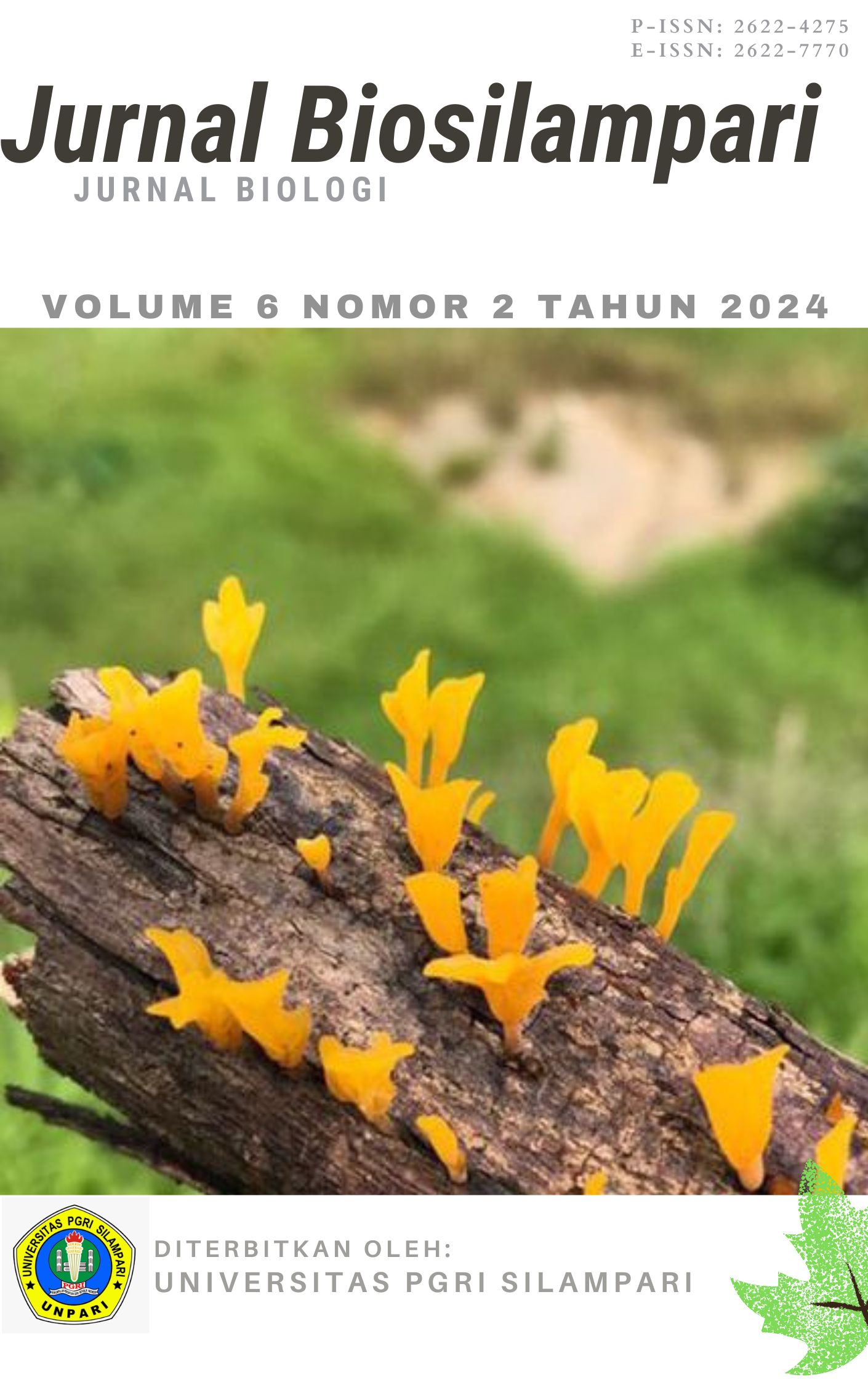Keanekaragaman dan Pola Distribusi Serangga Polinator Pada Tanaman Jeruk Kunci (Citrus microcarpa) di Kecamatan Merawang Kabupaten Bangka
DOI:
https://doi.org/10.62112/biosilampari.v6i2.58Kata Kunci:
Pollinator Insects, Calamansi, Diversity, DistributionAbstrak
This study aims to determine distribution patterns, calculate the diversity of pollinator insects, and analyze the relationship between environmental factors and the number of species and individual pollinator insects in Calamansi. This research is located in Jada Bahrin Village (station 1), Balunijuk Village (station 2), and Air Jangkang Village (station 3). The research location was determined based on the exploratory method of sampling insects using sweep nets and vane traps. Based on the research results, 811 individual insects were obtained, consisting of 300 pollinator insects (2 orders, 6 families, and 27 species) and 511 non-pollinator insects (4 orders, 14 families, and 18 species). The most common insect family was the Nymphalidae family with 101 individuals, and the least common was the Lycaneidae family with 2 individuals. The diversity index (3.360), wealth index (6.723), and evenness index (0.802) are included in the high category, while the dominance index is low (0.042). The distribution pattern of pollinator insects at the three stations is included in the uniform category. The results of the PCA analysis showed that the diversity, distribution pattern, and number of individuals were affected by air temperature, while the number of species was affected by air humidity and light intensity.











